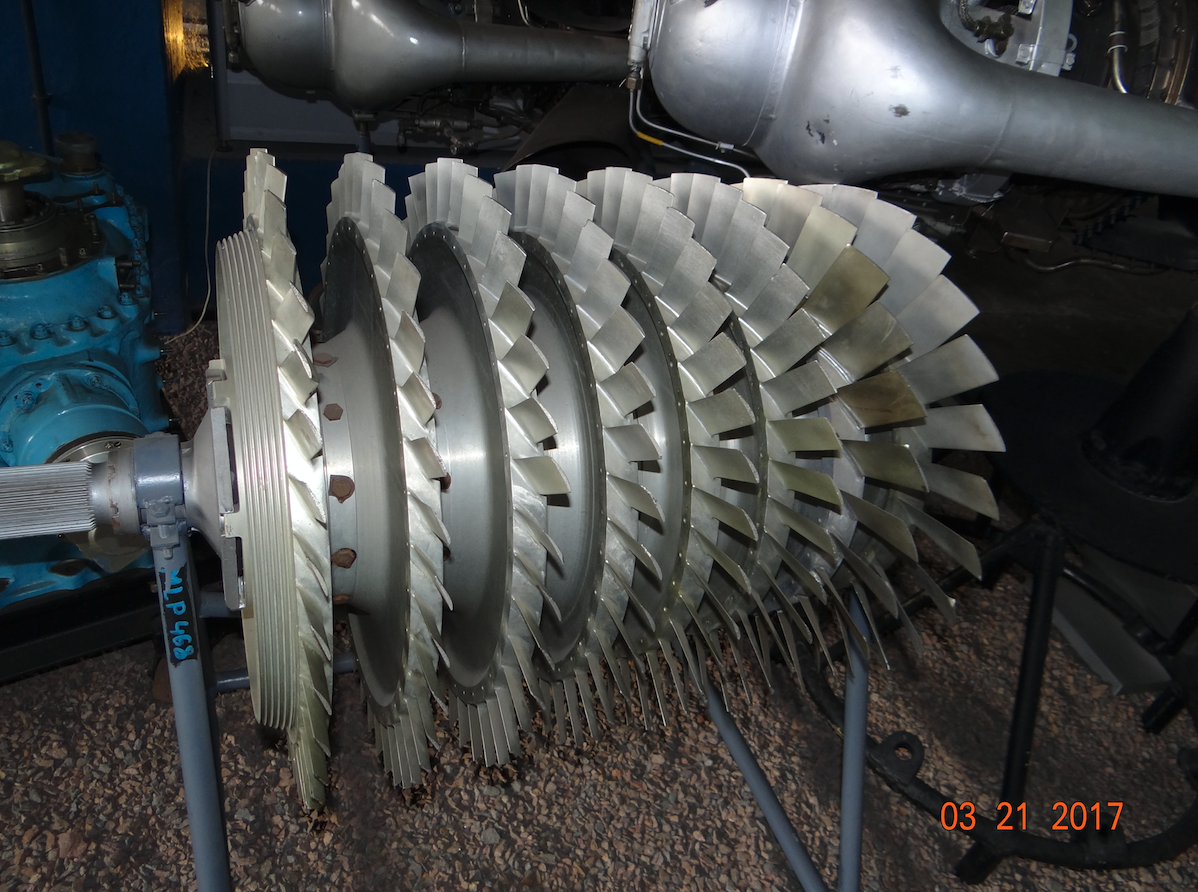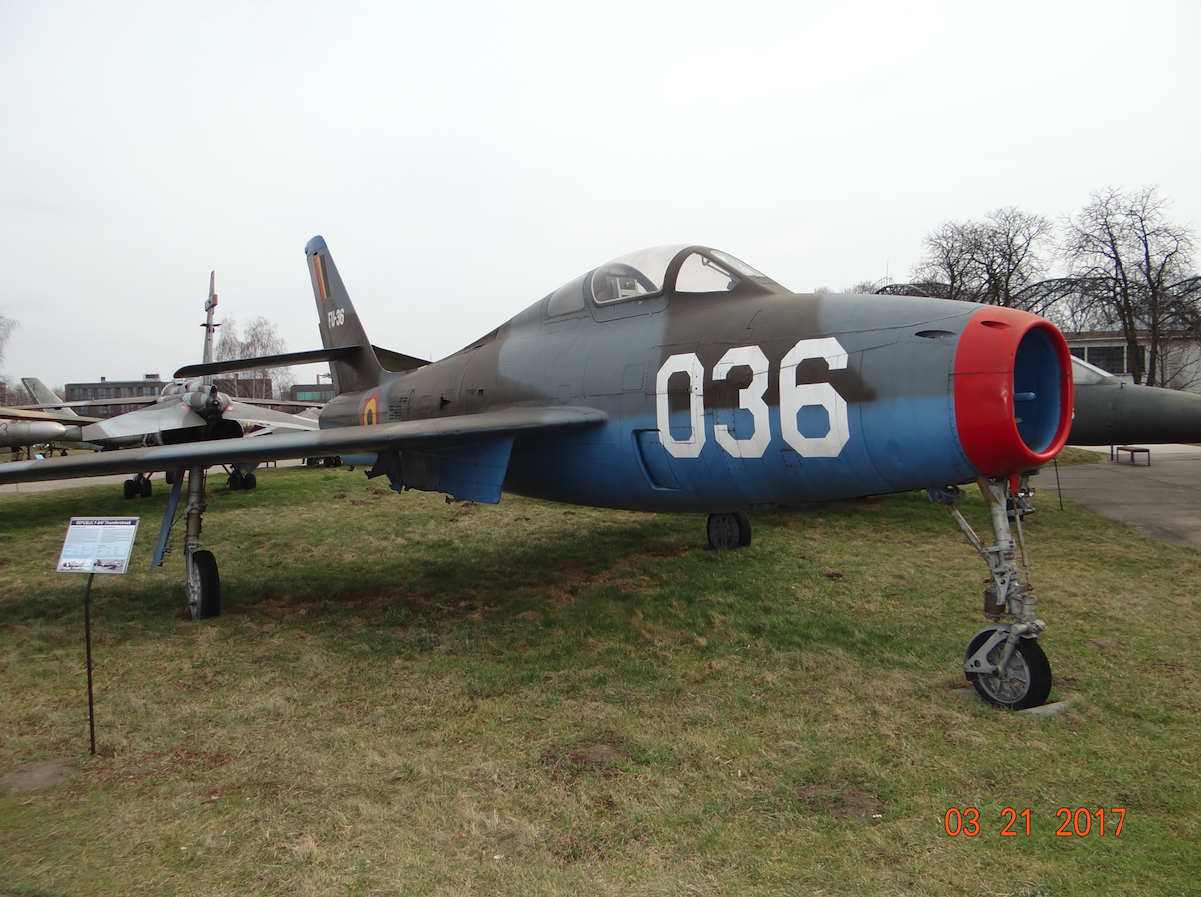Turbojets in USA
General Electric turbojet engine – Allison J35. 1946 year.
As early as 1945, engineers at General Electric and Allison set out to develop a turbojet engine with an axial compressor. This is how the design of the TG-180 was born, which later received the designation J35. The engine was developed in parallel with the J33 engine. Some historians believe that the J35 engine was the first design to feature an axial compressor in the US. The engine received an 11-stage axial compressor. The turbine was to be 1-stage or 2-stage. The afterburner was planned to be installed at the beginning. The goal was to achieve a max thrust of 7,400 lbf (32.92 kN). The Allison Engine Company was responsible for serial production.
The axial compressor for the TG-180 engine was theoretically developed at NACA. It consisted of 8 steps. General Electric has redesigned the fuel pumps and controls, oil pumps and hydraulic gears, and an RPM generator that is mounted in the center of the engine’s air intake. The fuel control for the engine and the afterburner was mechanical. The engine was controlled by the main throttle. On the other hand, the afterburner with a small lever. If the pilot forgets about the afterburner during the flight, not only will he quickly lose a lot of fuel, but most of all he would overheat the engine, because the afterburner could only work for a few minutes, and then it should cool down.
Work on the J35-GE engine dragged on, but subsequent problems were solved positively. The first start of the J35 engine took place in 1946. The first air test was carried out on the Republic XP-84 Thunderjet also in 1946. In September 1947, the engine was certified by passing a 150-hour test. At the end of 1947, production and further development of the engine was transferred to the Allison Engine Company (Allison Division of General Motors Corporation), although some production was performed at General Electric factories. Part of the series production was also performed at the GM Chevrolet plant. The J35-GE / A engine was produced in significant numbers, about 14,000 units. Production ended in 1955. J35 engines were installed in several airplanes. The following can be mentioned: Bell X-5, Douglas XB-43 Jetmaster, North American XB-45 Tornado, Convair XB-46, Boeing XB-47 Stratojet Martin XB-48, Northrop YB-49, and especially in combat from the early 50’s Republic F-84 Thunderjet and Northrop F-89 Scorpion.
The J35 engine performs well up to 50,000 ft (15,240 m). In the 1950s, one J35 engine cost $ 46,000.
The next developmental engine based on the J35 was the 10,900 lbf (48.49 kN) J71 Allison engine, which was initially designated J35-A-23. The J71-A engine was first launched in 1950 and was the second in the US after the J40-W to exceed 10,000 lbf thrust, but the first successful. About 20 versions of the J35 engine were produced, ranging from 3,820 lbf (16.99 kN) to 6,000 lbf (26.69 kN).
J35-A-35 engine specifications: 195.5 in. (4.97 m) long, 43 in. (1.09 m) in diameter, and weight 2,930 lb (1,330 kg). The engine consists of an 11-stage compressor, 8 flame cans (combustion chambers), 1-stage turbine. Fuel aviation kerosene (kerosene) type JP-4 or 100/130 octane gasoline. Thrust 5,600 lbf (24.91 kN0 without afterburning and 7,400 lbf with afterburning. Compression 5: 1. Airflow 91 lb / s (41 kG / s). Fuel consumption 1.1 lb / lbf / hr (112.13 kg / kN / hr.) Thrust to weight ratio 2.53 lbf / lb (0.025 kN / kg).
Written by Karol Placha Hetman


